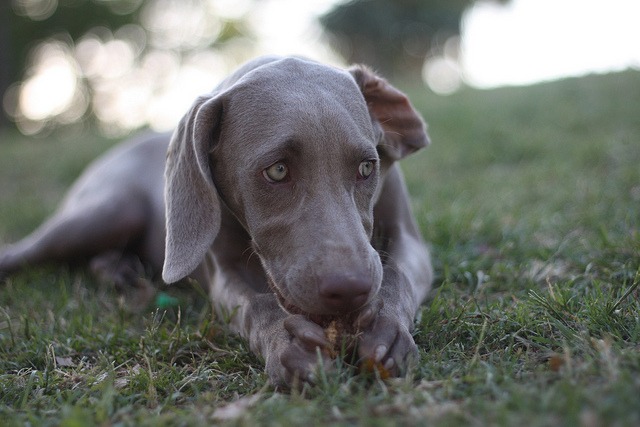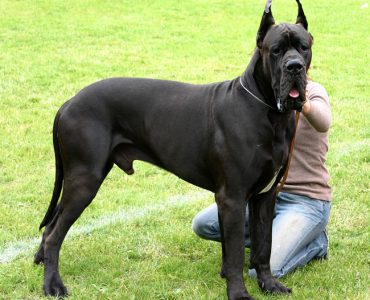The Weimaraner breed is many centuries old. It can be clearly seen in artwork dating back to the 17th century. Its name originates from Grand Duke Weimar who loved to hunt and the dog was originally bred as a hunting and gun dog. It was bred to hunt large game but as this became scarcer, overtime it was adapted to birds and smaller game.
This is a large and athletic dog. It is renown for its sleek appearance and the beautiful lines of its body. Its coat is short and fine although there is a rare longhaired variety. In both cases the coat will be gray although it can be seen in various shades. Typically the head and ears will be a shade lighter than the main part of the body. The head is long and held proud and it has a strong muzzle. Unusually for a breed of dog, several eye colours can be observed. These are grey, blue and amber. The nose too is gray. The Weimaraner has long ears that hang down like pendants and has webbed feet for swimming. Historically the tail of this breed will be docked or surgically truncated just days after birth. However, this practice is now prohibited in many parts of the world and so longer tails will be seen.
This is a happy and energetic breed. They need firm training and handling from a young age else they can be extremely rambunctious. Without an owner who asserts himself or herself as the leader, the Weimaraner can become wilful and will try to take over this position itself. Without this training they may also show less favourable behaviours such as aggression towards other dogs. They may also become restless and destructive.
The Weimaraner still has a strong hunting instinct and care should be taken when mixing with other pets especially smaller animals such as hamsters and cats. They love to live as part of a family and need plenty of attention and company to be truly content. Whilst this breed can be extremely gentle and good with children, their sheer boisterousness can be a problem with very small children as they can easily knock them down unintentionally. Again, regular exercise can keep this in check and help to prevent the dog becoming over excited and restless.
The Weimaraner is a healthy breed on the whole and life expectancy is on average 10 to 12 years. They are prone to bloating and so should be fed smaller and more frequent meals. They also commonly suffer with hip dysplacia but this has been drastically reduced over recent years with deliberate breeding out of bloodlines prone to this condition. Other ailments include tumours and hypertrophic osteodystrophy, which is caused by growing too rapidly.

In addition to being family pets, the Weimaraner can be found engaging in many occupations. It is still a popular hunting dog but also works as a guard dog, in search and rescue and is utilised by many police forces.













